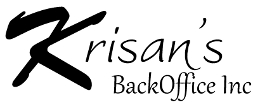
The complexity and progressive nature of our tax system offers a host of different types of savings accounts which are all taxed differently. Because they are all treated differently, investment managers can bring clients greater savings by carefully considering how they bill these various accounts. Some managers may not bill clients directly at all, but the hidden fees associated with that business model often deceive clients and enrich managers at their clients’ expense. For those fee-only managers who value honesty in their relationships with their clients and work for the clients’ best interests, the question of how to most favorably bill accounts is important.
General account types
From a tax perspective, there are three main types of accounts: standard taxable accounts, pre-tax Traditional IRA-types, and post-tax Roth IRA-types.
In taxable accounts, account growth is taxable immediately when an asset that has appreciated is sold. The growth is taxed at capital gains rates. This constant taxation works like a headwind for managers who responsibly rebalance client accounts by reducing the overall account value by a little bit with each trade. Since the main key to wealth is the incredible multiplying power of long-term compound interest, any reduction in account value now can have a large effect later on. As a result, most managers strongly encourage their clients to invest in Traditional and Roth IRAs.
For assets invested in Traditional and Roth IRAs, asset growth is not taxable when appreciated assets are sold. This allows the accounts to grow much faster than if the same money had been kept in a taxable account. However, there are a couple catches to each type of account.
For Traditional IRAs, though you get a tax deduction when you put money into the account, when you turn 70 1/2, you are required to start withdrawing from the account. The bad news is that these withdrawals are taxed at ordinary income tax rates, not capital gains rates.
Roth IRAs do not have Required Minimum Distributions, but you have to pay the tax on the money you contribute to a Roth IRA when you contribute it. Choosing a Roth IRA means you will have less money in the account initially, but because that money will never be taxed again, over the long-term the Roth IRA is nearly always a better option than a Traditional IRA.
Which account types should managers bill?
So which accounts should managers bill? Never Roth accounts – that pool of money has had all the taxes already taken out, so it will grow forever with nothing to hold it back. It would be silly to bill an account with unrestricted potential for growth. That just leaves the taxable accounts and Traditional IRAs.
One significant factor is that clients can deduct investment management fees on their taxes, but only if those fees were applied to managing taxable assets, so this only applies if the bill is paid out of a taxable account. It would seem then like billing a taxable account is better than billing a Traditional IRA, but as Michael Kitces notes in this blog post, this potential for savings is hampered by the Alternative Minimum Tax (AMT).
The tax deduction for investment management fees is one of the deductions that is ignored when considering whether Alternative Minimum Tax is due, so if the client is close to qualifying for AMT, billing the taxable accounts may not be as good an option as it sounds.
While the clients can’t get a tax deduction for bills paid out of a Traditional IRA, any bills paid reduce the account’s value which will reduce the Required Minimum Distributions that will have to be taken in the future. Further, this pays the bill with money that hasn’t yet been taxed and, by virtue of being used to pay the bill, never will be. On the other hand, paying bills out of a Traditional IRA reduces the amount of the client’s money that can grow tax-free.
Michael Kitces recommends that current retirees who are already drawing down their Traditional IRA with Required Minimum Distributions would benefit from paying fees out the Traditional IRA, but that clients who have time to wait until they turn 70 1/2 should pay bills out of taxable accounts and take the deduction. Unfortunately, he misses a crucial point in this analysis: Traditional IRA growth really isn’t tax-free because of Required Minimum Distributions, it is only tax-free while it grows. Taxes will be due on that money eventually.
This is important because of the special withdrawal rules for Traditional IRAs: for any withdrawal, the entire amount is counted as ordinary income. That means the growth in a Traditional IRA is taxed at ordinary income tax rates. The same growth, if it had occurred in a regular taxable account, would be taxed at capital gains rates, which are always at least 10% lower than ordinary income rates.
Because of how the growth will be taxed, letting assets sit in a Traditional IRA can actually incur more tax than leaving it in a taxable account. It is always best to bill the Traditional IRA.
Best choice for the client
The best choice for the client, then, would be to pay their entire portfolio’s bill out of the Traditional IRA, reducing its value and preventing the punishment of Required Minimum Distributions without having to make a taxable withdrawal. Unfortunately, the IRS does not allow this. The proportion of the client’s total bill that is assigned to the Traditional IRA cannot be greater than the proportion of the client’s total assets that are in the Traditional IRA.
The best service a manager can offer their client then is this: leave the Roth IRA alone, bill the Traditional IRA to the maximum extent possible, then bill the taxable accounts for the remainder. Managers should also inform their clients that they might be eligible to deduct their fee on their taxes.
This post first appeared on Marotta on Money and is reprinted here with permission.
Photo used here under Flickr Creative Commons.

